Overview
Teaching: 10 min
Exercises: 0 minQuestions
How can I use Git with RStudio?
Objectives
Understand how to use Git from RStudio.
Since version control is so useful when developing scripts, RStudio has built-in integration with Git. There are some more obscure Git features that you still need to use the command-line for, but RStudio has a nice interface for most common operations.
RStudio let’s you create a project associated with a given directory. This is a way to keep track of related files. One of the way to keep track of them is via version control! To get started using RStudio for version control, let’s make a new project:
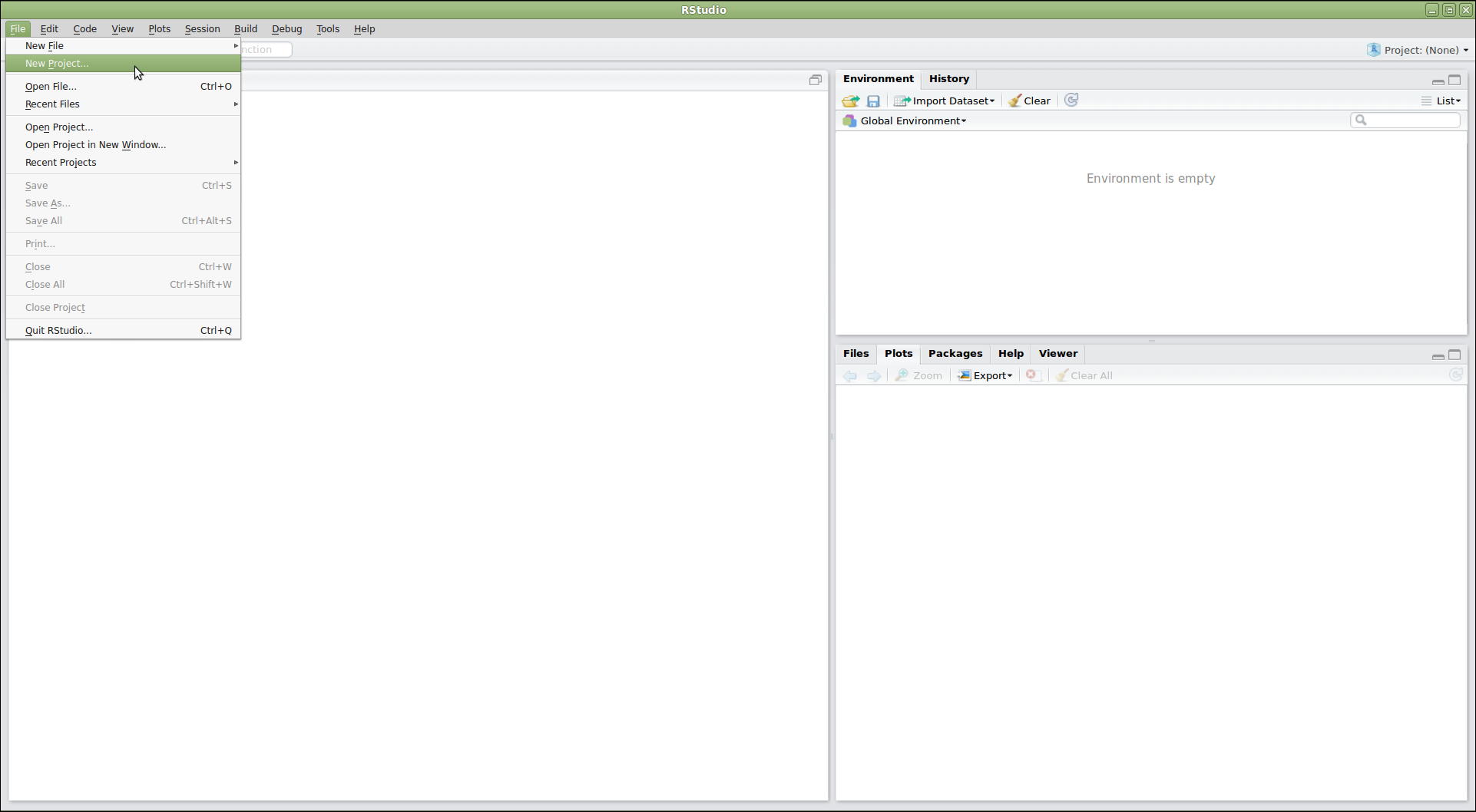
This will pop up a window asking us how we want to create the project. We have some options here. Let’s say that we want to use RStudio with the planets repository that we already made. Since that repository lives in a directory on our computer, we’ll choose “existing directory”:
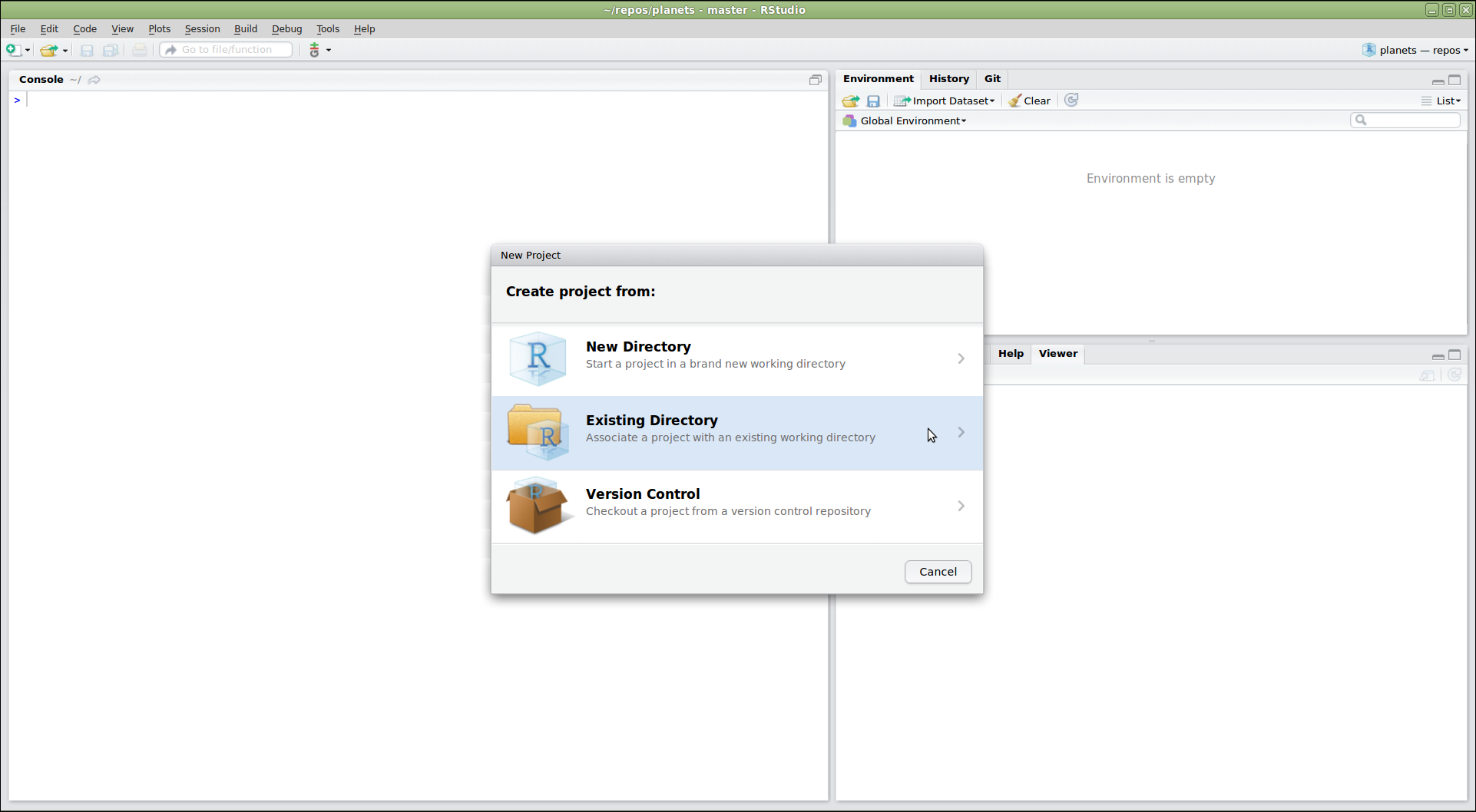
Do You See a “Version Control” Option?
Although we’re not going to use it here, there should be a “version control” option on this menu. That is what you would click on if you wanted to create a project on your computer by cloning a repository from github. If that option is not present, it probably means that RStudio doesn’t know where your Git executable is. See this page for some debugging advice. Even if you have Git installed, you may need to accept the XCode license if you are using MacOSX.
Next, RStudio will ask which existing directory we want to use. Click “browse” to navigate to the correct directory on your computer, then click “create project”:
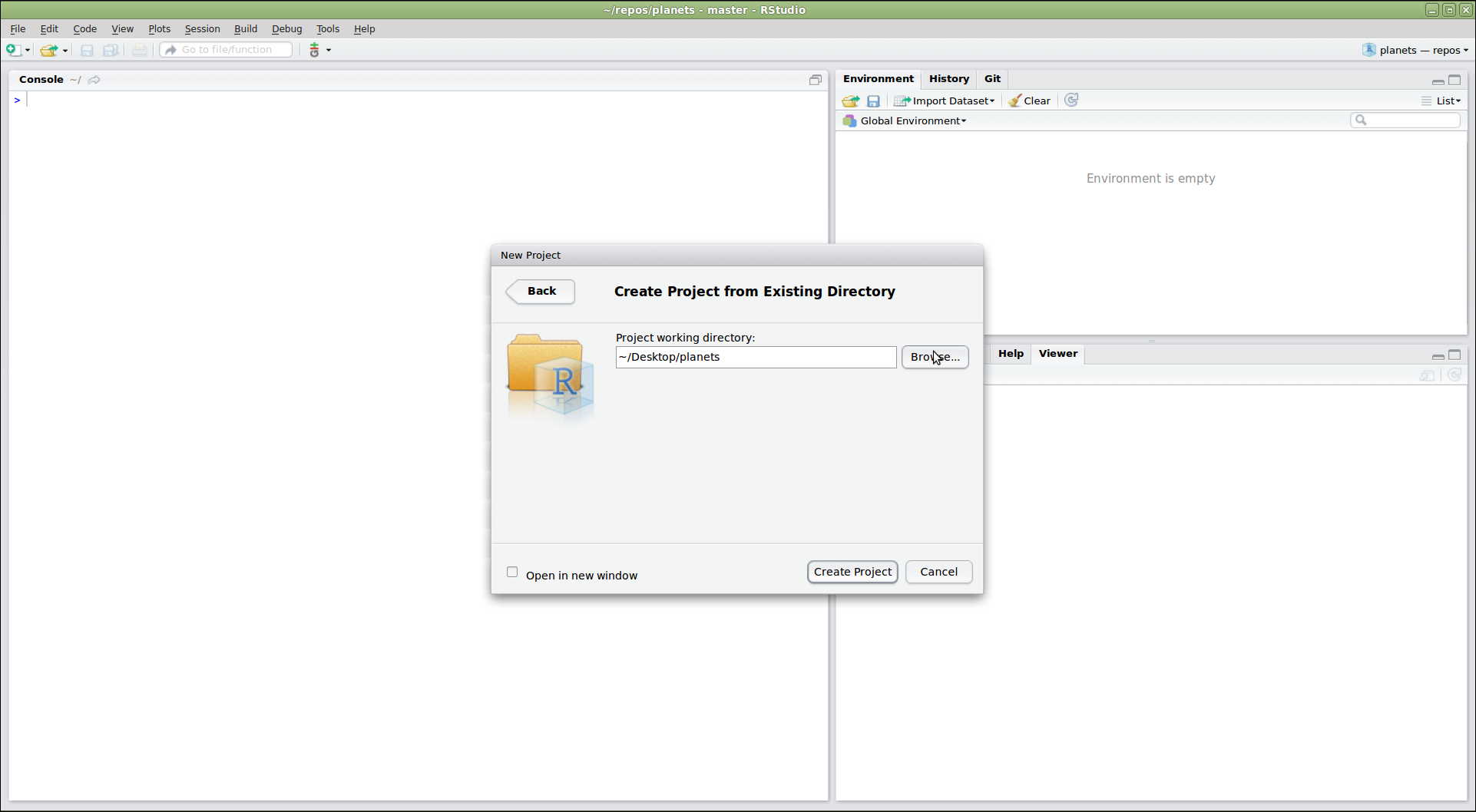
Ta-da! Now you have an R project containing your repository. Notice the vertical “Git” menu that is now on the menu bar. This means RStudio has recognized that this directory is a git repository, so it’s giving you tools to use Git:
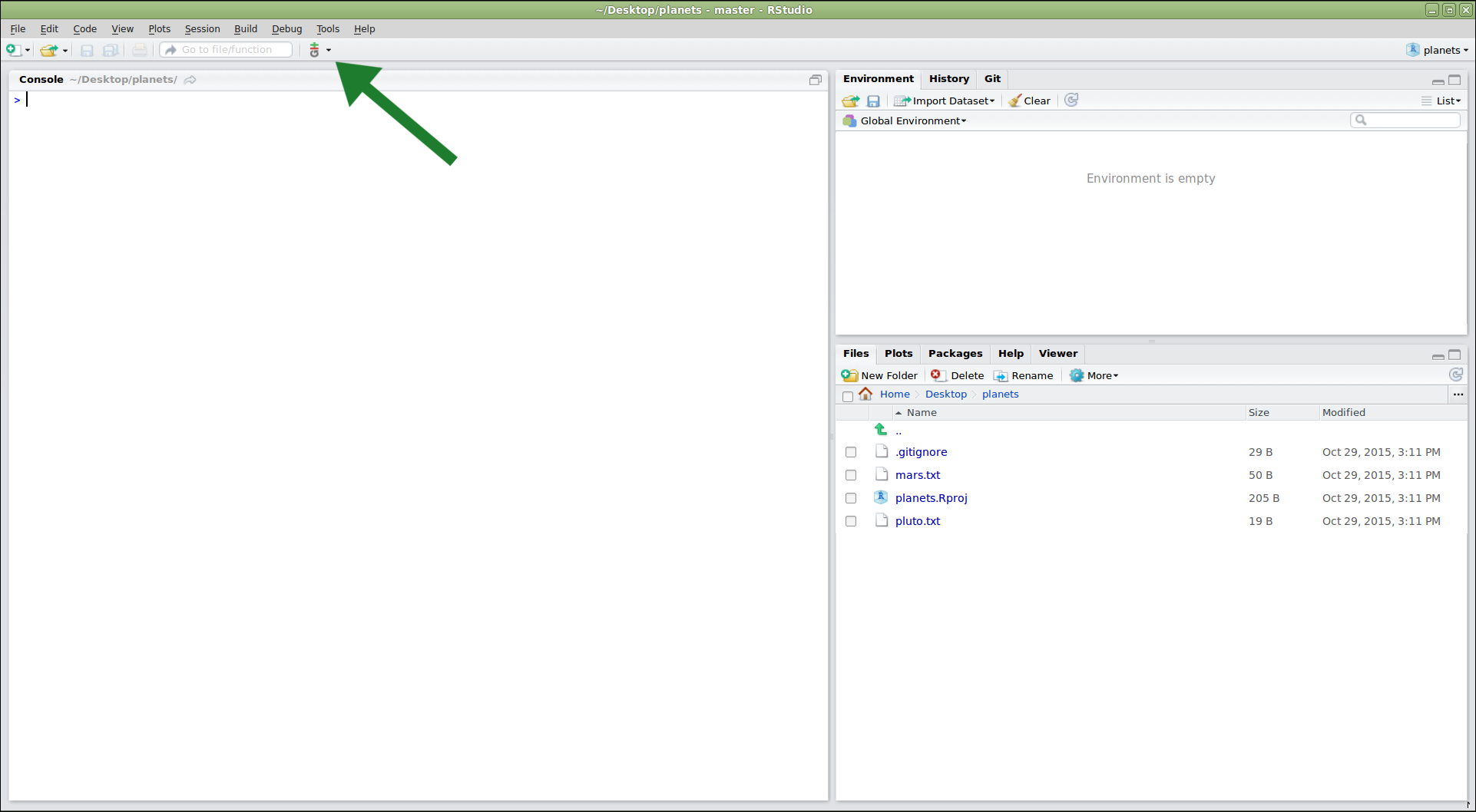
To edit the files in your repository, you can click on them from the panel in the lower right. Let’s add some more information about pluto:
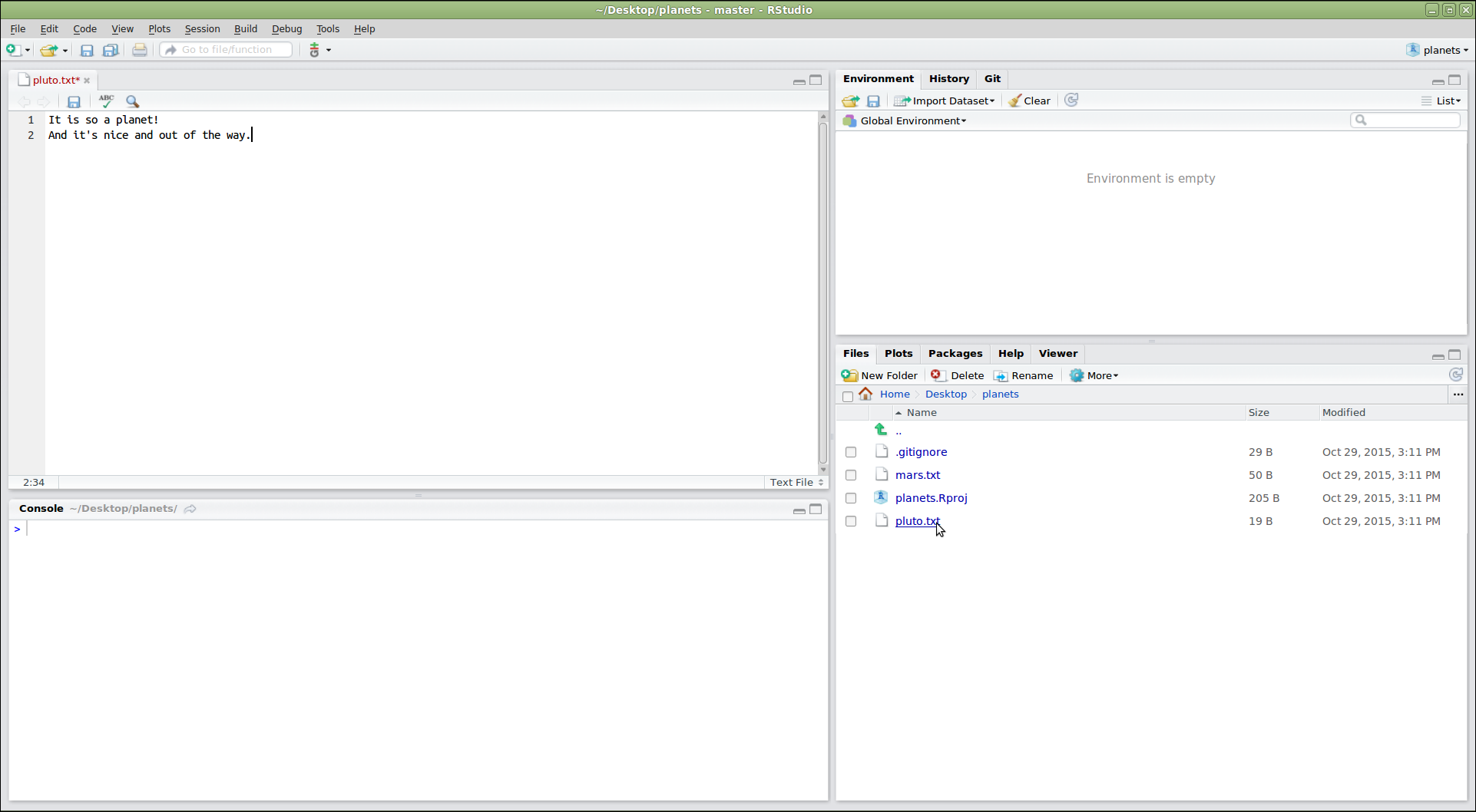
We can also use RStudio to commit these changes. Go to the git menu and click “commit”:
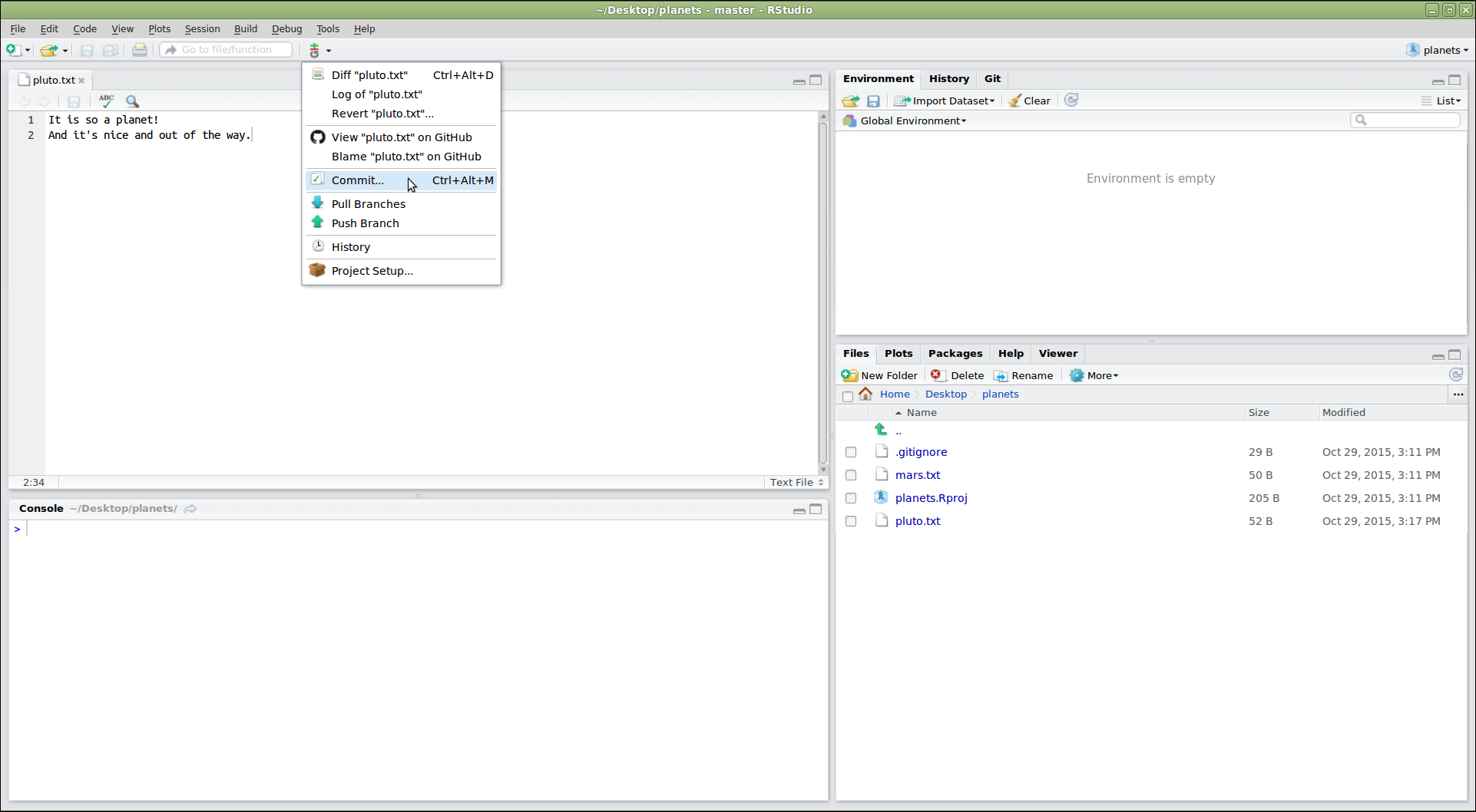
This will bring up a screen where you can select which files to commit (check the boxes in the “staged” column) and enter a commit message (in the upper right). The icons in the “status” column indicate the current status of each file. You can also see the changes to each file by clicking on its name. Once everything is the way you want it, click “commit”:
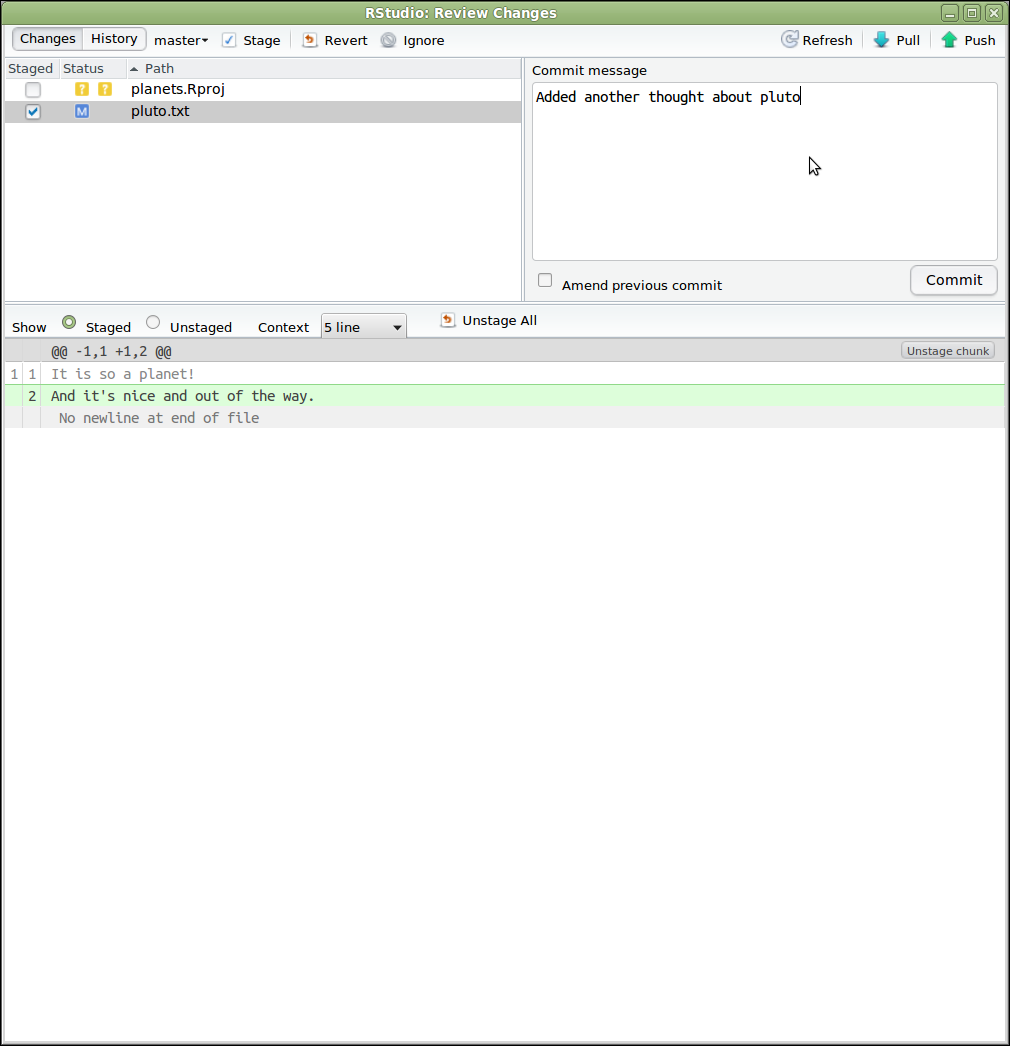
You can push these changes by selecting “push” from the Git menu. There are also options there to pull from a remote version of the repository, and view the history:
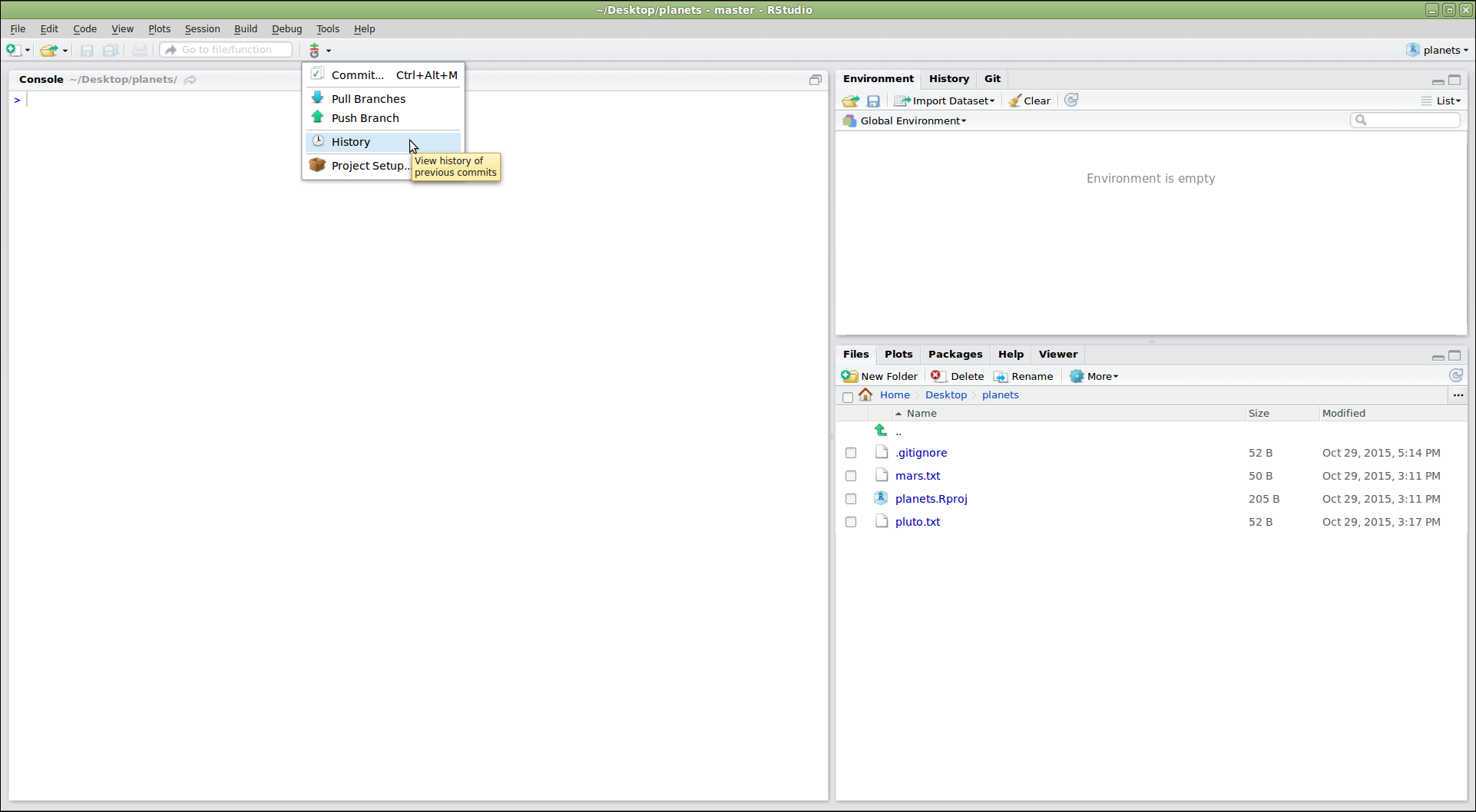
Are the Push/Pull Commands Grayed Out?
If this is the case, it generally means that RStudio doesn’t know the location of any other version of your repository (i.e. the one on GitHub). To fix this, open a terminal to the repository and enter the command:
git push -u origin master. Then restart RStudio.
If we click on “history”, we can see a pretty graphical version of what
git log would tell us:
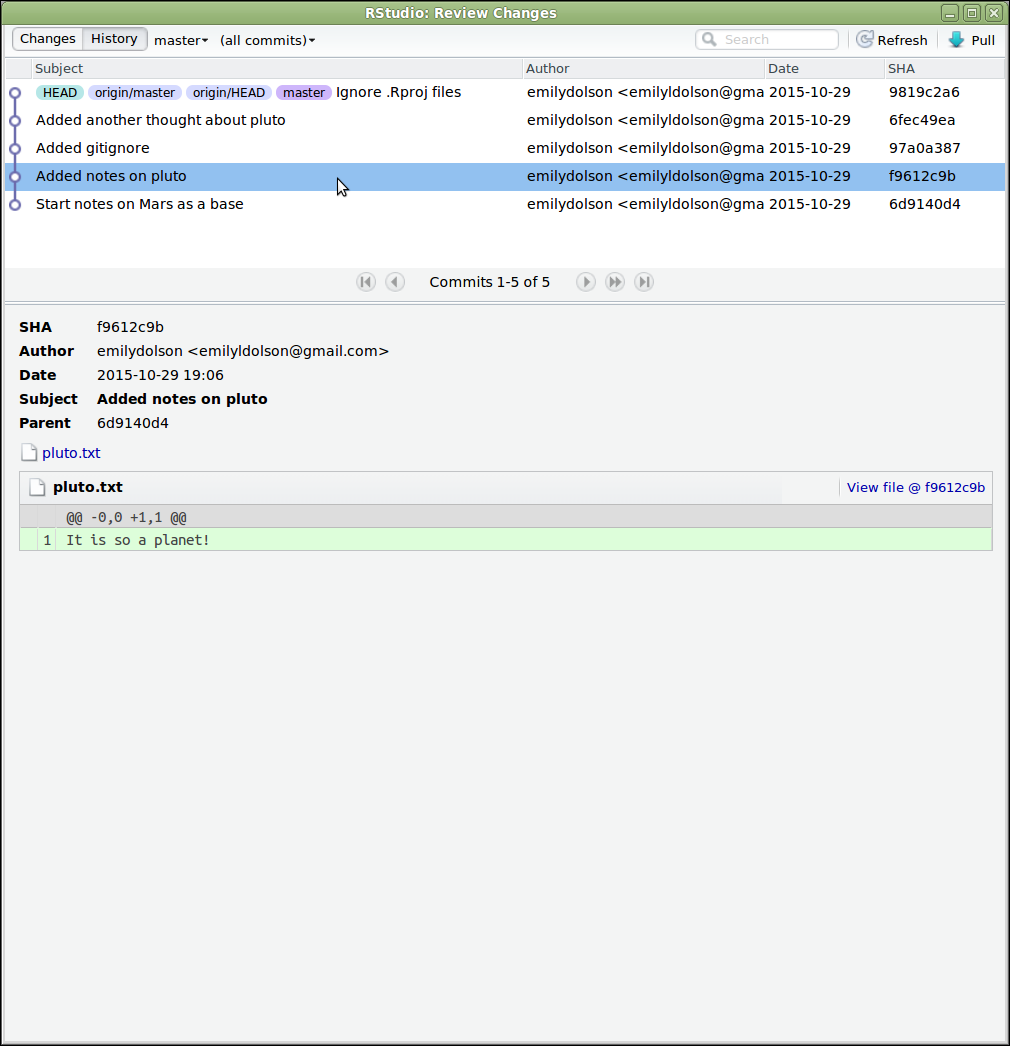
RStudio creates some files that is uses to keep track of your project. You generally don’t want to track these, so adding them to your .gitignore file is a good idea:
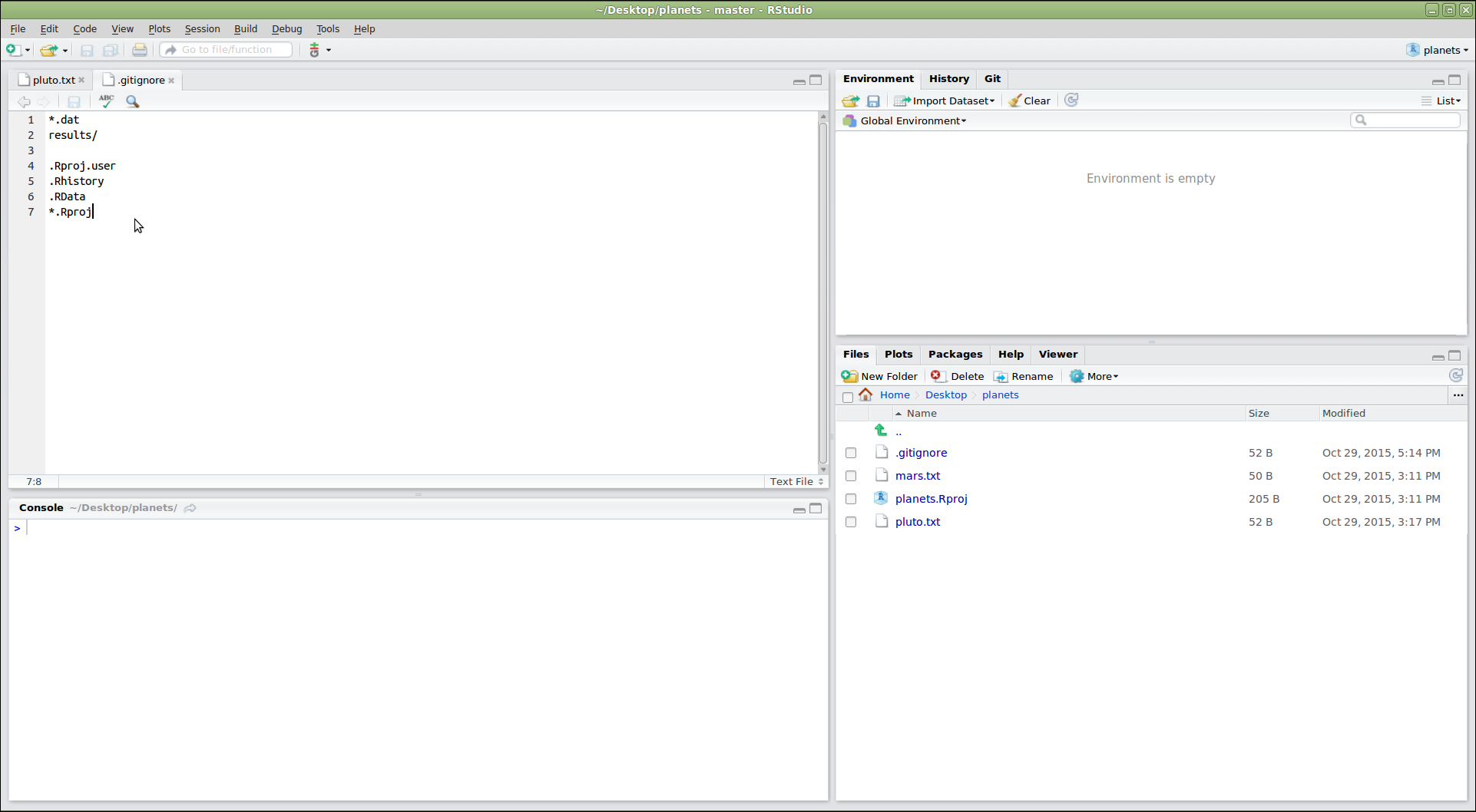
There are many more features buried in the RStudio git interface, but these should be enough to get you started!
Key Points
Create an RStudio project